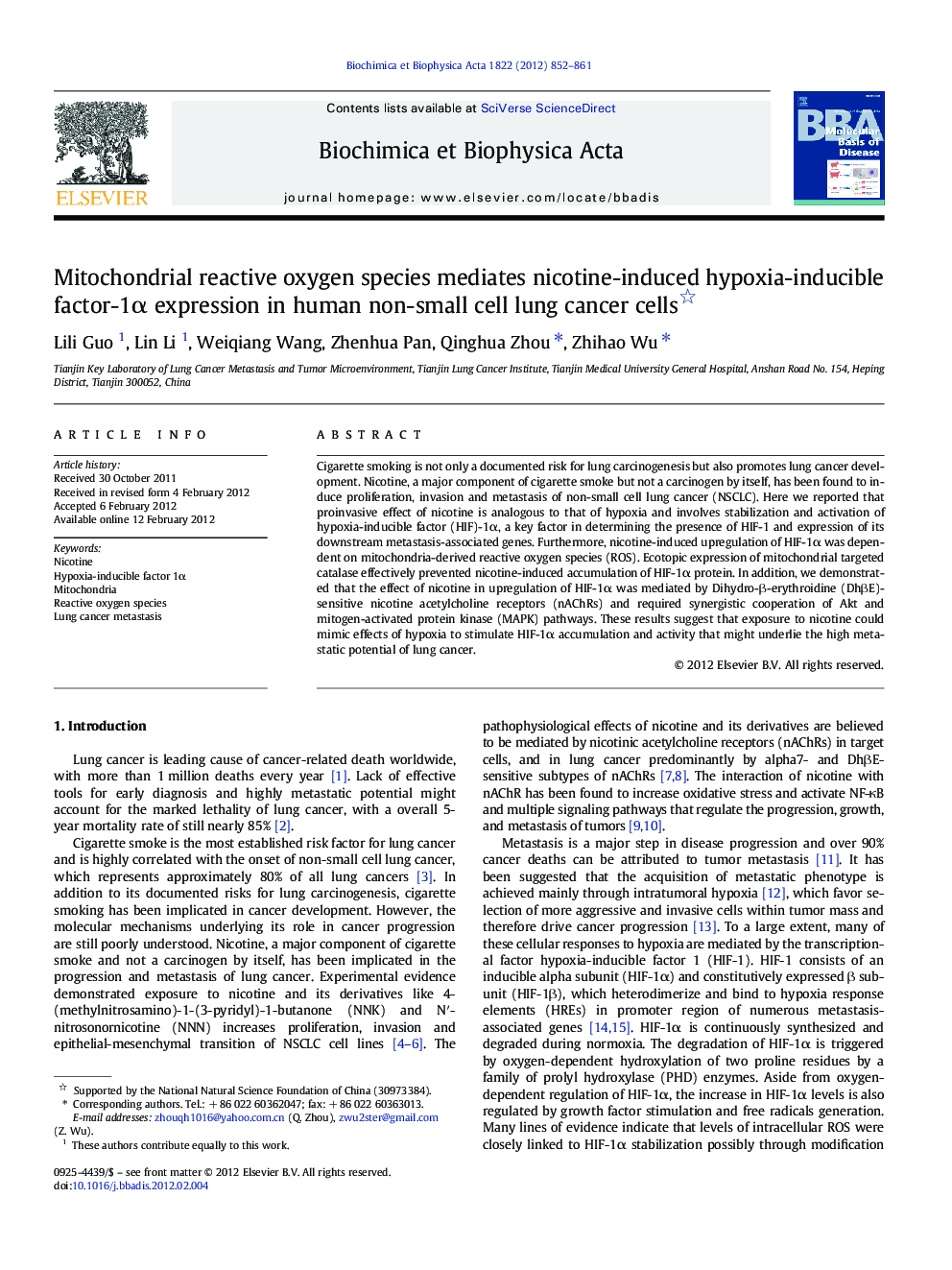| Article ID | Journal | Published Year | Pages | File Type |
|---|---|---|---|---|
| 1904987 | Biochimica et Biophysica Acta (BBA) - Molecular Basis of Disease | 2012 | 10 Pages |
Cigarette smoking is not only a documented risk for lung carcinogenesis but also promotes lung cancer development. Nicotine, a major component of cigarette smoke but not a carcinogen by itself, has been found to induce proliferation, invasion and metastasis of non-small cell lung cancer (NSCLC). Here we reported that proinvasive effect of nicotine is analogous to that of hypoxia and involves stabilization and activation of hypoxia-inducible factor (HIF)-1α, a key factor in determining the presence of HIF-1 and expression of its downstream metastasis-associated genes. Furthermore, nicotine-induced upregulation of HIF-1α was dependent on mitochondria-derived reactive oxygen species (ROS). Ecotopic expression of mitochondrial targeted catalase effectively prevented nicotine-induced accumulation of HIF-1α protein. In addition, we demonstrated that the effect of nicotine in upregulation of HIF-1α was mediated by Dihydro-β-erythroidine (DhβE)-sensitive nicotine acetylcholine receptors (nAChRs) and required synergistic cooperation of Akt and mitogen-activated protein kinase (MAPK) pathways. These results suggest that exposure to nicotine could mimic effects of hypoxia to stimulate HIF-1α accumulation and activity that might underlie the high metastatic potential of lung cancer.
► We reported that nicotine-induced HIF-1α was dependent on mitochondria-derived ROS. ► The effect of nicotine was mediated by DhβE-sensitive nicotine receptors. ► Nicotine-induced HIF-1α required cooperation of Akt and MAPK pathways.
